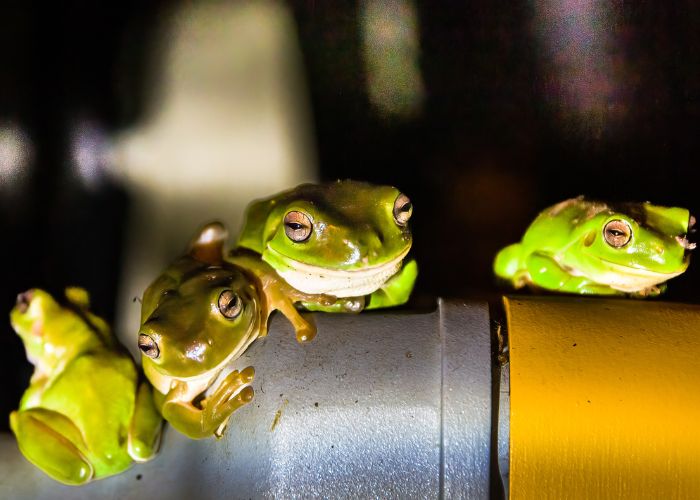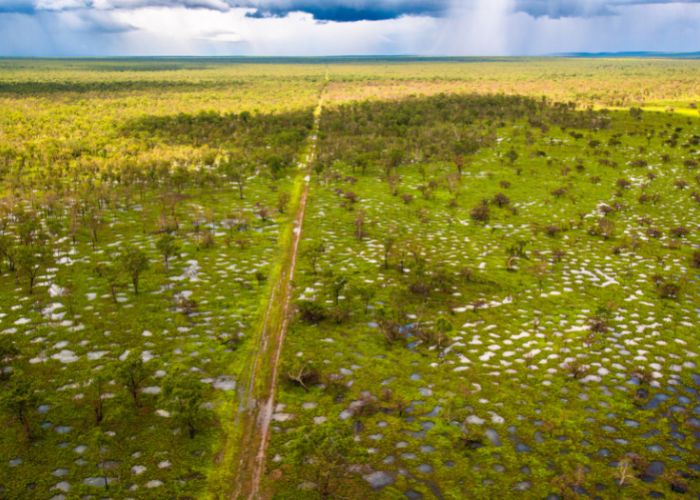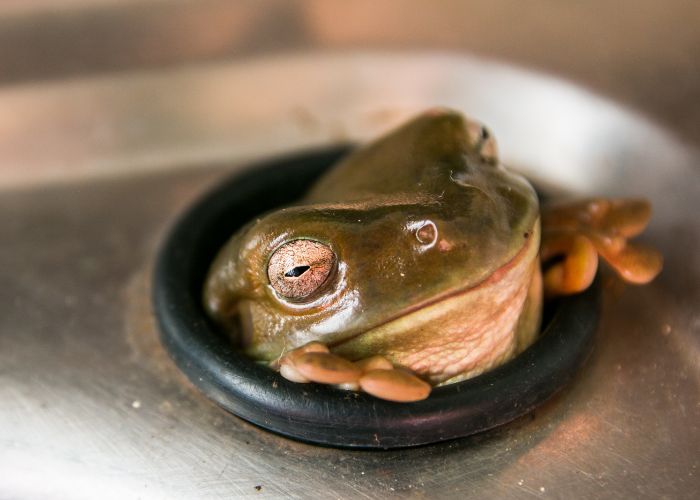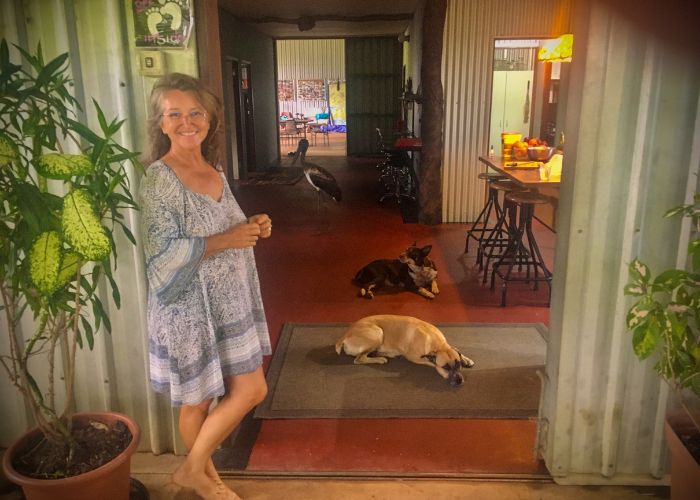As live-in caretakers of a wildlife sanctuary in remote Far North Queensland, Sally and Graham are accustomed to sharing their home with wildlife. But this year’s record wet season has delivered an army of unexpected and deafeningly loud 3 am visitors – Green Tree Frogs.
For over a decade, Sally and Graham have managed the day-to-day, and often day-through-the-night, operations at Australian Wildlife Conservancy’s (AWC) Piccaninny Plains Wildlife Sanctuary in the heart of the Cape York Peninsula. Together, they carry out manual and exhaustive tasks from feral herbivore control to fire management and weed control – all of which protects the 165,000-hectare nature reserve’s diverse wildlife, rainforests, woodlands, wetlands and grasslands.
 Sally Gray/AWC
Sally Gray/AWC
Being so active in rural Australia, the pair has had their fair share of unusual wildlife encounters, and even housed a few wandering individuals over the years. In 2021, Sally and Graham enjoyed morning coffee almost daily with a juvenile Black-necked Stork nicknamed Fred, who would casually walk into their homestead.
This year, as the sanctuary experiences the biggest wet season in 100 years with 2,420mm of rain since Christmas, Sally and Graham have embraced their loudest visitors yet – an army of Green Tree Frogs that demand entry to the couple’s bathroom at 3:00am!
 Sally Gray/AWC
Sally Gray/AWC
“We’ve actually cohabitated with the Green Tree Frogs for years, but this wet season, they’ve developed a ‘special’ way to communicate when they want to be let in,” said Sally Gray, AWC Assistant Sanctuary Manager. “If we happen to close the bathroom door at night, we invariably get a 3 am wakeup ‘squark’ to come and let them in – we are now exceedingly well trained by the frogs.”
The first time Sally and Graham heard the overpowering ‘squarks’, they raced out of bed expecting to find a frog being eaten by a snake. Instead, they were met by dozens of bulging eyes.
 Sally Gray/AWC
Sally Gray/AWC
“Frogs understandably get really loud when a part of their anatomy is in a snake’s mouth,” Sally explained. “But it took three nights of intense squarking at 3 am for us to realise it was actually a frog to sanctuary manager communications call – they were letting us know, they want in!”
“When we get out of bed to see them, they look up at us and squark until we open the bathroom door. Then they bound in and behave like excited puppies before they settle down.”
 Sally Gray/AWC
Sally Gray/AWC
Once inside, the frogs will sleep in the couple’s bathroom during the day, mostly finding comfort on the shower rail or in the sink. As the sun sets, they move out for a night on the sanctuary and then return on schedule, at 3 am.
“I think they have found a safe environment,” Sally added. “Maybe we have generations of them now, and this is their preferred habitat.”
“They may be loud but they’re a welcome change to the Bull Ants that moved in early this wet season. We were finding nests everywhere, to the point that we couldn’t walk anywhere without getting stung.”
Support Australian Wildlife Conservancy's science-led conservation work and safeguard the future of Australia's native species
Donate Now